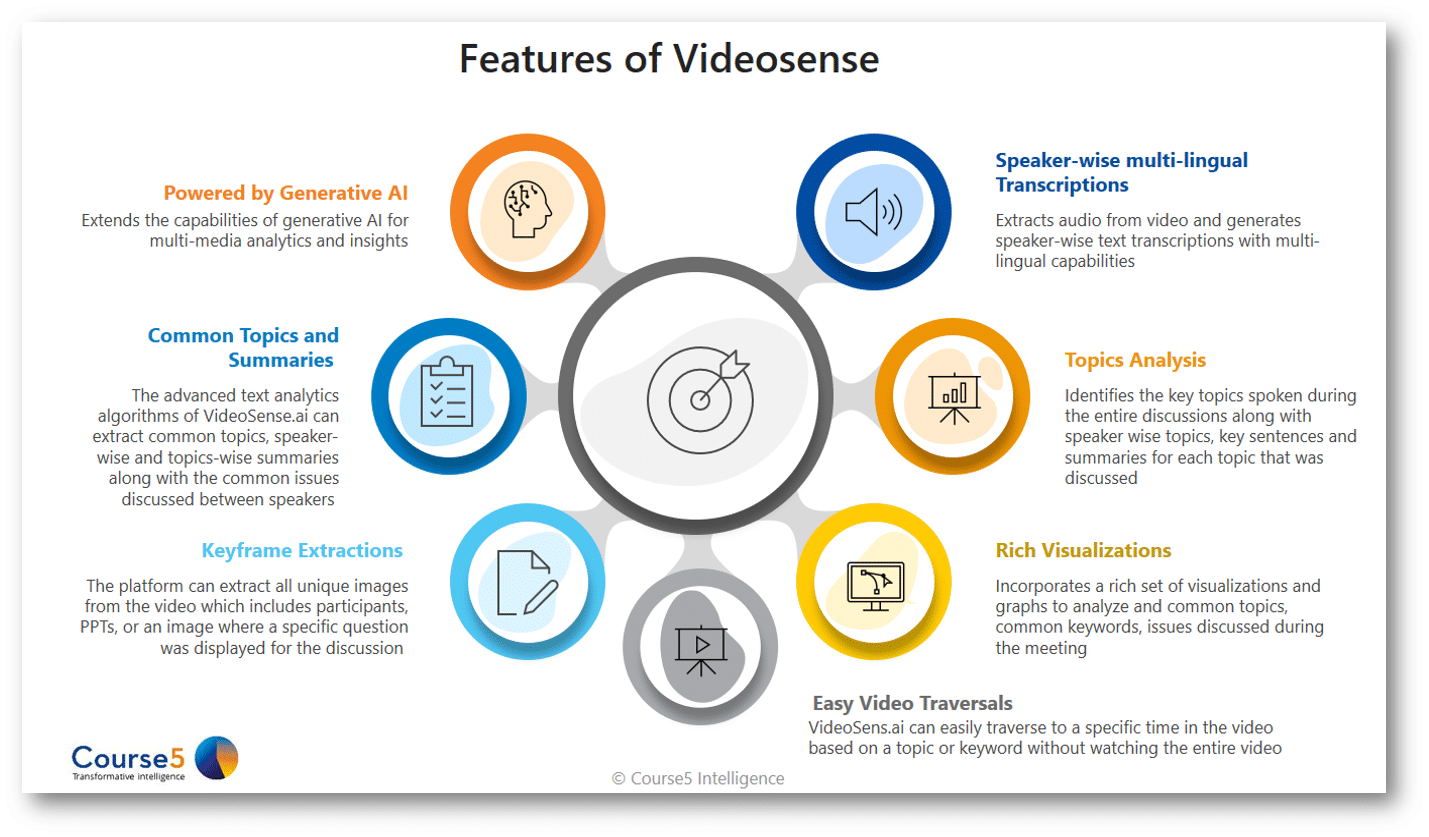Leveraging Video Analytics to Generate Insights
Videos are everywhere. They are revolutionizing how consumers shop.
This underscores the increasing importance of video product reviews in the consumer decision-making process, as more users are turning to platforms like YouTube and Instagram for information about products or services they’re interested in.
Naturally, these videos have become crucial sources of information for brands seeking to assess the success of their products.
Although it’s not limited to just product reviews; customer survey videos and even the company’s internal product meetings provide a treasure trove of insights for analytics teams looking to enhance a brand’s products and services.
Let’s understand with an example.
The Power of AI-driven Video Analytics
Let’s say your company ‘Flip Out’ has just released a ground-breaking ‘Flip101′ smartphone at a competitive price with super cool features. As an analyst, you are tasked to analyze how the product is performing.
So, how will you determine it’s impact on the market? Other than the traditional sales and market analytics, you will need information on what consumers are sharing about the phone, which features they are happy with and which features they are complaining about, how the phone compares to others in the category, and more.
Traditional text analytics performed by crawling the websites is already proficient in analyzing feedbacks, user reviews, and also with pulling out data from all over the internet but it cannot answer all of the questions if the videos are missed out!
Now, before you start imagining an army of analysts sifting through hours and hours of videos, fret not! Video analytics technologies have made significant advancements in recent years, thanks to artificial intelligence (AI) and machine learning (ML). They can now analyze large amounts of video data and extract valuable insights with great accuracy.
|
In the context of the Flip101 phone, a good video analytics engine can help you generate insights and answer questions like these:
|
Additionally, it can also extract specific images/screens from various videos regarding any particular feature of Flip101. For instance, it can we give feedback with camera samples to the tech team to improve the camera quality, under low light conditions or indoor conditions.
With this understanding let’s delve deeper into what makes a robust video analytics platform.
Features of a Video Analytics Platform
A video analytics engine can answer a wide range of questions related to security, operations, customer behavior, and compliance in various sectors, making it a valuable tool for data-driven decision-making.

Data Collection
It is probably the first step. This step may include filtering out YouTube and Instagram videos to focus solely on those discussing the Flip101 phone. It can also include internal discussion videos with your service center staff. A sound video analytics system can get all those videos in a single place to start your analytics. Thanks to readily available public APIs and libraries, this process is more accessible than ever.

In-Depth Search
Once you have all those in one place, the video analytics platform will empower you to perform precise searches. Suppose you’re interested in assessing the performance of the AI camera in low-light conditions. In that case, you should be able to search for relevant keywords, for example, “AI camera in low-light conditions,” find specific moments in videos where the topic was discussed, and extract relevant snippets.

AI-driven Video Analytics
The possibilities of video analytics are numerous and may involve the application of traditional NLP or the new LLM capabilities to text retrieved from videos for tasks like topic detection, sentiment analysis, etc. You may need a complete pipeline of speech-to-text conversion, speaker-diarization, time stamp identification, video traversals, and even some methods to tackle the LLM capabilities to unlock powerful insights. Also, good visualization capability will further need to dig deeper and digest the insights.

Video Summaries
Going through a pile of lengthy videos to get some insights is a challenging task. Video summaries help you navigate these videos while ensuring you get all the discussion points. Summaries can even be based on a specific topic like camera issues or in whichever way you need, based on sentiment, topic-wise, or combining several videos based on a keyword, phrase, and more. Video analytics can even strip out all those segments that discuss a feature like a camera performance and collate them into a single video, ready to make a presentation to the decision-makers panel!

Visual Analytics and LLMs
Recent developments in Vision technologies like Segment Anything from Meta, generalized object detection and query models, LLM-based models like VisualGPT, etc., can be united with Video Analytics platforms to produce even more powerful use cases. Imagine pulling out all those video snippets where a person takes a selfie with your phone or uses a fingerprint sensor to unlock.
Even traditional vision techniques extended to videos can extract the faces of all those top influencers talking about your phone. They can recognize and analyze their facial sentiment to understand the percentage of time they were happy while reviewing your Flip101.
Navigating Challenges
Video analytics has become increasingly important for businesses seeking a competitive edge in today’s digital landscape. While video analytics offers immense potential, it comes with challenges, including processing speed, storage, security, privacy concerns, scalability, and more.
Embracing the power of multiple machine learning models with varying architectures and formats in a rapidly evolving AI landscape is challenging and imperative. But it will be worth the effort and mandatory soon!
Introducing Course5’s VideoSense
Powered by Generative AI, VideoSense is a video analytics platform developed by Course5 Intelligence for generating insights from long-running videos.
The platform uses advanced audio/video analytics, computer vision technologies, and NLP processing pipelines to generate powerful insights with rich visualizations, thereby saving ~70-80% time for enhanced video insights.
With these advanced capabilities at its core, VideoSense offers enhanced market research with easy video insights, customer experience analysis, and speed to decision-making with a distinctive combination of human and machine intelligence.
If you want to learn more about Videosense, contact us to schedule a demo.

Sujith Kumar
Sujith is a National Award winner for the Best Young Achiever of the Year - 2019 from ASSOCHAM (presented by Hon. Minister of Commerce and...Read More

Don’t miss our next article!
Sign up to get the latest perspectives on analytics, insights, and AI.







